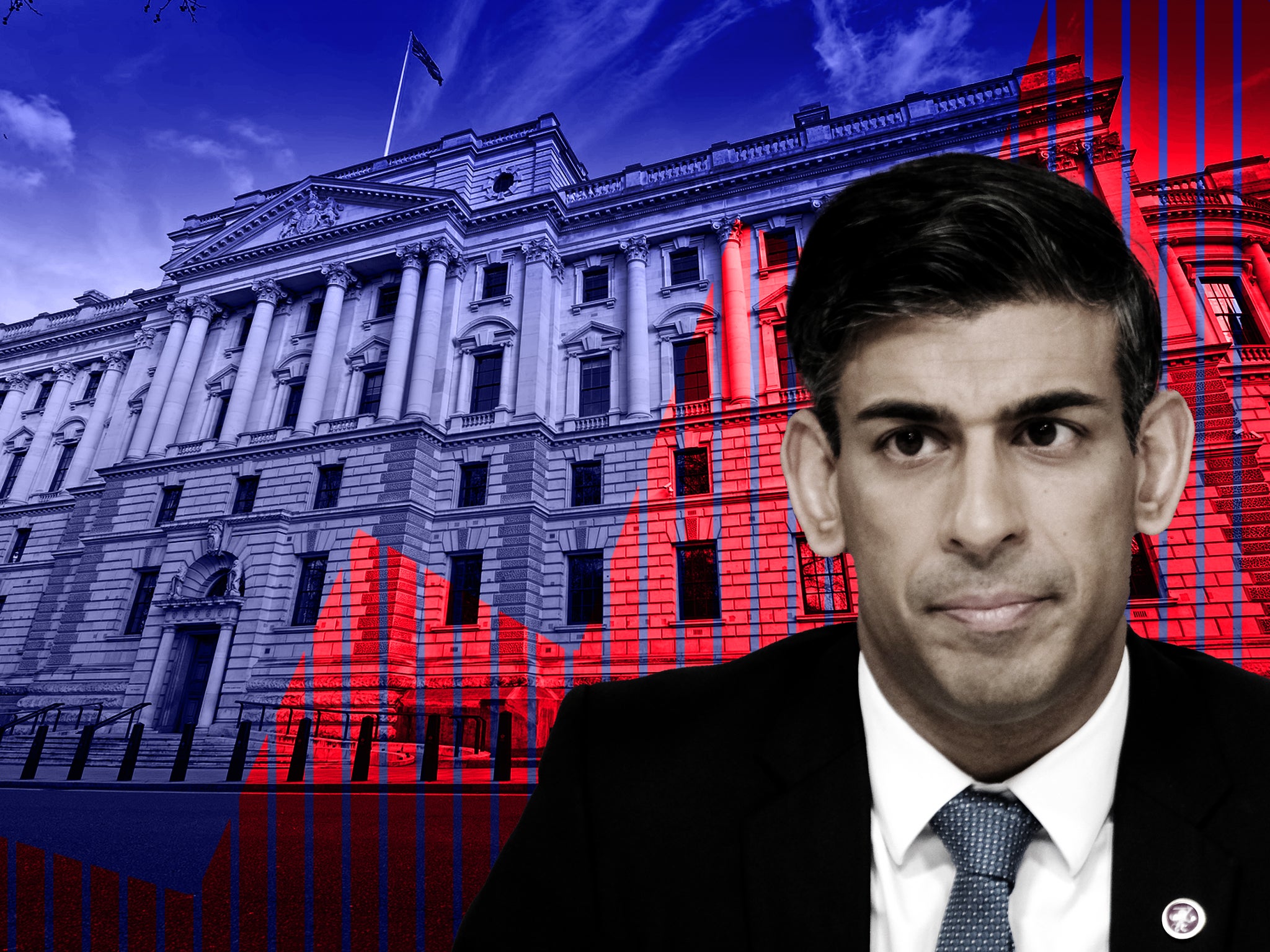Rishi Sunak’s debt promise narrows the gap between Labour and the Tories
As one of his five pledges to the British public, the prime minister has restated of one of the government’s fiscal rules. Our chief political commentator John Rentoul explores whether it is a sensible promise


The prime minister’s third pledge is another that is forecast to happen anyway. He said: “We will make sure our national debt is falling so that we can secure the future of public services.” This is a restatement of one of the fiscal rules that he operated when he was chancellor: that debt should be falling as a share of national income.
The government has extended its own deadline for hitting this target. In January last year, Sunak as chancellor said it had to be met “by the third year of the rolling forecast period”. Then, in November’s autumn statement, Jeremy Hunt announced that underlying debt must fall as a percentage of GDP “by the fifth year of a rolling five-year period”.
By allowing an extra two years, Sunak and Hunt ensured that the Office for Budget Responsibility (OBR) forecast was that debt would indeed be lower in the target year, 2027-28, than in previous years. But the margin is fine. Debt is predicted to fall to 97.3 per cent of national income in year five, from 97.6 per cent in year four.
Not only is this target for a date after the next election, but it is always moving. It is a rolling five-year target, which means the test is not what actually happens in 2027-28, but whether the OBR continues to predict, in successive forecasts, that debt will be falling in five years’ time.
It seems likely that the rolling target will be hit, because nothing bad and unexpected has happened to the economy since the last forecast, and indeed, world gas prices have come down. But is it a sensible promise? It is notable that it includes an explanation of why it matters: “So that we can secure the future of public services.” Sunak’s argument is that, although a debt target might seem abstract, it is needed to underpin the sound public finances that make his promise on the NHS, for example, credible.
Some economists argue that the target is arbitrary. In 2010, the coalition government insisted that emergency action had to be taken to cut government spending and raise taxes because debt was at 60 per cent of national income, and now it is half as high again. Of course, it could be that David Cameron and Nick Clegg were wrong then while Sunak and Hunt are right now, but the main purpose of the target is to reassure the markets that government debt is under control.
We have just had a real-life demonstration of what happens when the markets believe that the government is willing to allow debt to increase indefinitely, and this is probably the least a government can do to convince the markets otherwise. It may be an arbitrary target, and a weak, moving one, but it has done the trick in calming expectations of rising debt and therefore interest rates.
The opposition agrees that credibility with the markets is needed for sound government finances and therefore for good public services. Even before the Truss-Kwarteng laboratory experiment, Labour was committed to its own version of the debt reduction rule. It hadn’t specified the period by which debt had to be falling, but Keir Starmer and Rachel Reeves don’t oppose the rolling five-year target.
Thus the main political effect of Sunak’s promise is to confirm that the next election will be fought on tightly constrained fiscal territory. Although it would be possible in theory for Labour to propose to borrow more in the early years after the election and still have debt falling by the fifth year, any planned departure from the government’s baseline risks spooking the markets.
Sunak and Hunt have only just got rid of the “Kwasi premium” – the higher interest rates demanded by the markets to cover the risk of the government losing control of the public finances – and mortgage rates are still higher than before Liz Truss became prime minister. Starmer and Reeves do not want the markets to charge a “Labour premium” instead.
The falling debt rule ensures that the parties’ election plans to tax, spend and borrow will not be very different from each other. Labour’s promises to hire more NHS staff and teachers are costed: they would be paid for by small tax increases on non-doms and school fees. But there is no room for anything else: Reeves’s ambitious plans to borrow an extra £28bn a year for a “green prosperity plan” may have to be abandoned.
Sunak’s fifth promise ensures that the gap between the parties at the next election will be small.
Join our commenting forum
Join thought-provoking conversations, follow other Independent readers and see their replies
Comments
Bookmark popover
Removed from bookmarks